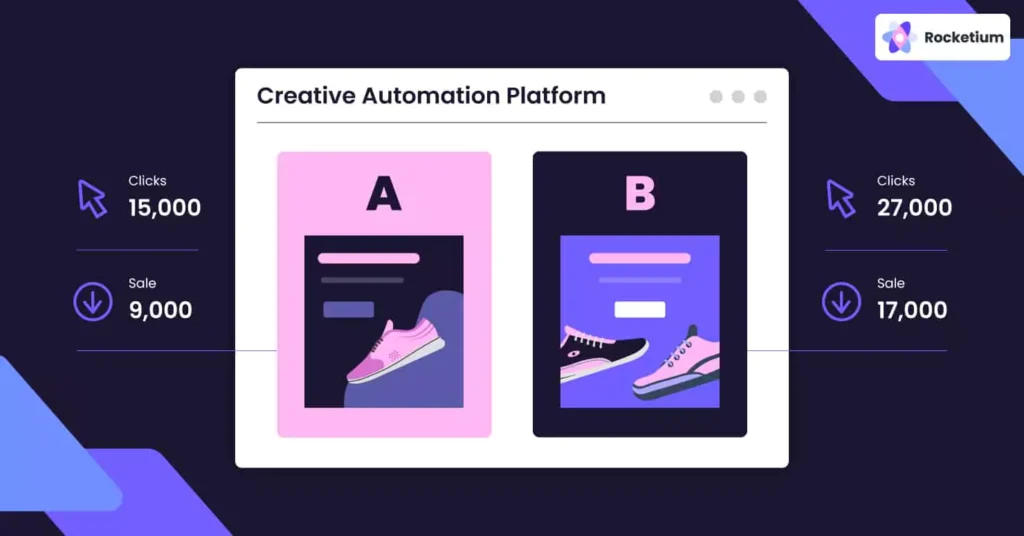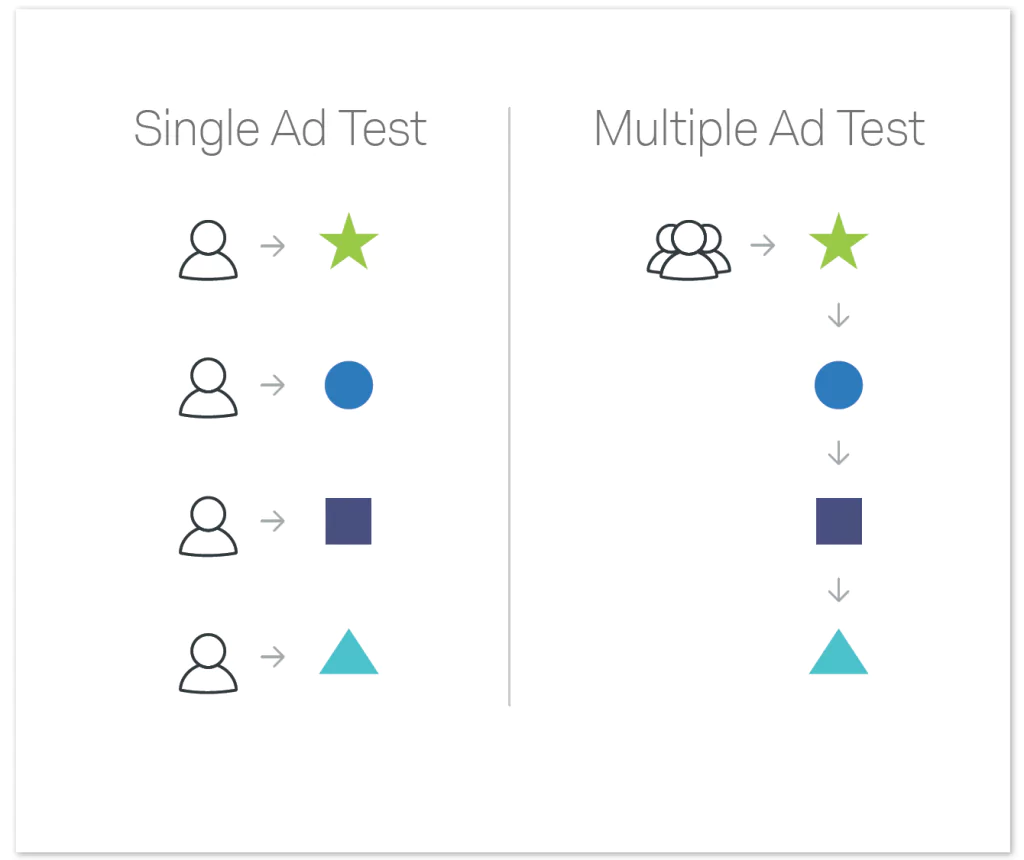Ad Testing: Measuring the Effectiveness of Advertising Campaigns
Ad testing is a critical process that evaluates the effectiveness of advertising campaigns by measuring various metrics to determine how well an advertisement resonates with its intended audience and achieves goals. Marketers can make data-driven decisions to optimise ads and maximise return on investment by conducting ad testing.
Advertising campaigns are a significant investment for companies, so it is crucial to ensure they reach their intended audience and deliver the desired message effectively. Ad testing provides insight into how ads perform, allowing marketers to identify areas of improvement and make informed decisions towards better results.
Consider a clothing retailer launching an ad campaign promoting its summer collection. With ad testing, the retailer can measure ads' impact on its target audience, understand which elements resonate most strongly, and then fine-tune accordingly—testing different visuals, copy variations or even platforms – in search of the most effective combination.
Ad concept testing means before making any decisions about concepts; they’re evaluating potential effectiveness at this stage. Using data from concept tests enables businesses to compare ideas against one another at a high level to choose which have merit and should be pursued further. Ad tests provide insights into consumer preferences and behaviour, enabling businesses to create attention-getting ads among their target audiences.
Table of Contents
Importance of Ad Testing

Ad testing is of utmost importance to measure the effect and efficiency of ad campaigns. It helps determine whether consumers accept the ads, pay attention to them, understand their messages and calls to action, and act upon them. By understanding these factors better, advertisers can make adjustments to help them connect more effectively with their target audience to deliver resonate messages. Ad testing also helps identify media channels worth investing in, optimises elements within a campaign and measures how well investments correlate with objectives.
Here’s an example of why ad testing matters: A beverage company is launching a new ad campaign for a low-sugar healthy drink. Through ad testing, it can determine whether consumers like the ad and whether it does an excellent job of conveying health benefits associated with the product. By measuring how well an ad resonates with its target audience, a company can make data-informed decisions about refining a campaign so it is more likely to connect.
Another reason why ad testing matters is because it maximises consumer knowledge and touchpoints. If you conduct tests on your ads, you can learn valuable information about your target audience’s preferences, interests and behaviours. This information can then be used to create ads more likely to resonate with audiences – leading to higher engagement rates and better overall campaign outcomes.
Methods Used for Ad Testing
There are various ad testing methods, each with its advantages and uses. Some of these include concept testing, copy testing, A/B testing, pre-testing, eye tracking and neuromarketing ad testing. Concept testing is evaluating ad concepts before launching them into the market. Copy testing assesses how effective an advertisement’s copy or written content is. A/B testing compares two different versions of an ad to see which one performs better—pre-testing measures how impactful and good quality an advertisement is before it goes on air. Post-testing assesses how well a campaign has performed after it has finished.
For example, a technology company might want to launch a new product and want to know if its ads will effectively get people interested in buying it. The company could do concept tests to see which ads people like best (and that fit with their brand image), then choose the most effective one for further development.
Eye tracking measures where people look when they look at an ad – this can reveal the visual hierarchy of an ad and help advertisers put critical elements in places where they will get noticed.
Neuromarketing ad testing combines neuroscience (the study of the brain) with marketing to measure people’s subconscious responses to ads using techniques such as EEG and fMRI scans. Advertisers can use this information to create more engaging ads that connect powerfully with consumers’ brains.
Critical Metrics for Ad Performance
When evaluating the effectiveness of an ad, it is crucial to consider several key metrics. These include ad recall, ad engagement and the strength of the call to action.
Ad recall measures how well viewers remember or recognise an ad. Ad engagement assesses how well an ad captures and maintains viewer attention. The strength of the call to action indicates how effectively an ad drives a viewer's response.
For example, a travel agency running an advertising campaign to promote a time-limited holiday package could measure ad recall by conducting surveys to determine how well people remember details about the offer.
Ad engagement might be measured using click-through rates, time spent on landing pages or social media interactions.
The strength of the call to action might be assessed by measuring conversion rates – for example, how many bookings were made due to seeing the ad?
Another important metric for evaluating ads is likability. This assesses whether people enjoyed watching or interacting with an ad and is crucial because it can influence attitudes towards brands and willingness to engage with messages in ads.
Best Practices for Ad Testing
To ensure effective ad testing, following some best practices is essential. First and foremost, use a representative audience that closely matches your target demographic. This ensures that the feedback you get accurately represents what the people you want to reach would think or do. Use clear and concise surveys to gather feedback from the audience. The questions you ask should be designed to elicit specific responses that help evaluate the effectiveness of your ad.
Ensure you’re asking key questions that address your ad testing objectives–this ensures it aligns with what you’re trying to achieve with your advertising campaign.
For example, suppose an e-commerce company is looking to optimise their product listing ads. In that case, it’d want to ensure the audience participating in their test closely matched their target demographic – age, gender, interests, etc.
They’d also want to design surveys with specific questions related to what they wanted to achieve through their testing – for instance, how clear were the product descriptions? How appealing were the visuals?
Using monadic tests (where respondents are only exposed to one version of an ad) can also help minimise bias and produce more accurate results.
Once you’ve got all this data together, don’t forget: analyse it! Ad testing is iterative – use insights gained from each test run as a springboard for refining ads and optimising campaigns.
Marketers can identify patterns/trends/areas for improvement by analysing data collected during ad testing. Armed with this information, they can make data-driven decisions on changes likely to enhance future ads’ effectiveness.
Popular Ad Testing Tools and Platforms

If you want to conduct an ad test, several popular tools and platforms can help. One is Quantilope’s online consumer intelligence platform, which offers a comprehensive ad-testing solution.
With support from research consultants and real-time results visualisation, Quantilope’s platform allows advertisers to make data-driven decisions.
For example, a global consumer goods company could use the platform for ad testing before an international advertising campaign. It would be easy to reach target audiences in different regions, collect feedback and visualise the results in real time. This would allow the company to optimise its ads for each market so they resonate with local consumers.
Zinklar is another popular tool for ad testing. It offers a range of features designed to measure the efficiency and effectiveness of advertising campaigns.
These include tools for pretesting ads, post-testing ads and tracking the impact of advertising campaigns over time. The idea is that marketers should continuously evaluate how well their ads are performing and make data-driven decisions about how to optimise their campaigns.
A/B Testing vs Split Testing in Ad Testing

In ad testing, two widely used methods are A/B and split testing. With A/B testing, you compare two versions of an ad (usually with one key element changed) to see which performs better. Split testing involves dividing your audience into groups and exposing each group to a different ad version. Both methods help you assess how other variables affect ad performance and make data-driven decisions.
For example, a software company launching a new ad campaign might use A/B testing to compare two headlines for their ad copy. By running two ad versions with different headlines and measuring click-through rates, they can see which headline gets more responses from their audience.
A clothing retailer might use split testing to evaluate the impact of two visuals in their ad. By dividing their audience into two groups and showing each group a different visual, they can compare how well each version does.
Both methods are helpful for ad testing; your chosen choice depends on what you’re trying to accomplish with your campaign. Use A/B testing when you want to test just one variable—like a headline or call-to-action—and split testing when trying multiple variables simultaneously. Both methods give you valuable insights into how your ads perform so that you can make data-driven decisions about optimising your campaigns.
The Role of Ad Experimentation in Optimising Advertising Campaigns
Ad experimentation is vital for optimising advertising campaigns, as it allows advertisers to test various variables – such as ad copy, visuals and targeting strategies – and identify the most effective elements.
Marketers can use data-driven insights to refine their ads and improve campaign performance by continuously testing ads in real time. This, in turn, can help boost ad effectiveness.
For example, a fitness equipment company might experiment with different ad visuals featuring other models using its products. By comparing click-through and conversion rates for each visual, the advertiser could determine which resonates most with its target audience and optimise its campaign accordingly.
Another aspect of ad experimentation involves testing different ad formats or channels to reach the target audience more effectively. For instance, a technology company might experiment with video ads on social media platforms to see whether they generate higher engagement than static image ads. Advertisers can determine what works best for their target audience by running experiments like this and allocate their budgets accordingly.
Reaching the Target Audience Effectively through Ad Testing

Advertisers can use ad testing to understand how different audience segments respond to their ads to reach their target audience more effectively. By analysing data from ad testing, marketers can adapt their ads to fit better their target audience's preferences, needs and behaviours. This leads to more successful campaigns that get more engagement and conversions.
For example, a beauty brand might want to target millennials. Ad testing could help them determine how well their ads work with different subgroups within this demographic – for instance, beauty enthusiasts, eco-conscious individuals or people who are into skincare. By understanding which elements of an ad resonate most with each subgroup, they can create tailored campaigns that speak to these people.
Another way ad testing helps advertisers reach their target audience effectively is by optimising where they put an ad and who they show it to. By testing different placements and targeting options, advertisers can determine which combinations work best at reaching their target audience accurately – for instance, which social media platforms and demographics generate the most engagement and conversions for an online fashion retailer.
Benefits of Ad Testing in Terms of Ad and Brand Recall
Ad testing has numerous benefits in terms of assessing ad and brand recall. As mentioned earlier, ad recall is the ability of viewers to remember and recognise an ad. Conducting ad testing allows advertisers to assess how effective their ads are at creating a lasting impression and increasing brand recall among the target audience. This helps advertisers optimise their ads for maximum brand awareness and recognition.
For example, a car manufacturer might conduct ad testing to evaluate brand recall of its new car model among potential buyers. By measuring whether the audience remembers critical features, the brand name or other distinguishing elements of the car, it can gauge how well its ads have created a lasting impression. This information can then be used to refine the ads to improve brand recall among the target audience.
Brand recall matters because it affects consumer purchase decisions and perceptions about a brand. By creating memorable ads that leave a lasting impression, advertisers can increase brand recall and build trust in their brands, leading to higher repeat purchasing and greater loyalty towards brands.
Timing and Types of Ad Tests

Ad testing can be performed at various stages of an ad campaign. Pre-testing happens before the ads are launched to assess their impact and quality, while post-testing takes place after the campaign ends to evaluate how well the ads worked. Continuous tracking, such as advertising tracking and social media listening, lets marketers measure their campaigns' effectiveness. The type of ad test used depends on what a marketer tries to achieve.
For example, a food delivery service launching a new ad campaign might run pre-tests to see how well its ads will work before they go live. This could involve getting feedback from a sample audience on how much impact the ads have, how clear their message is and whether people find them appealing overall. Post-tests might happen once the campaign has ended and could measure metrics such as conversion rates or brand recognition to see how well it worked. Continuous tracking could be used throughout the campaign to monitor its real-time performance and make necessary adjustments.
The timing of ad testing depends on which kind of test is being done: pre-test, post-test or continuous tracking. Pre-testing allows advertisers to gauge an ad’s likely impact and quality before it airs so they can identify issues in advance and make any necessary changes before they launch their campaign. Post-tests provide insights into an ad’s effectiveness once a campaign has ended; continuous tracking means continuously evaluating an advertising campaign’s effectiveness using real-time data.
In summary, ad testing is crucial for measuring whether advertising campaigns work. By using different methods, considering key metrics and following best practice guidelines, marketers can ensure their ads hit home with their target audiences more effectively. Ad testing tools and platforms like Quantilope’s online consumer intelligence platform or Zinklar can help with this process by supporting running tests and making data-driven decisions. Ultimately, though it happens, marketers should remember that by constantly refining their ads through repeated rounds of ad testing, they can maximise brand recall and achieve their advertising objectives.
